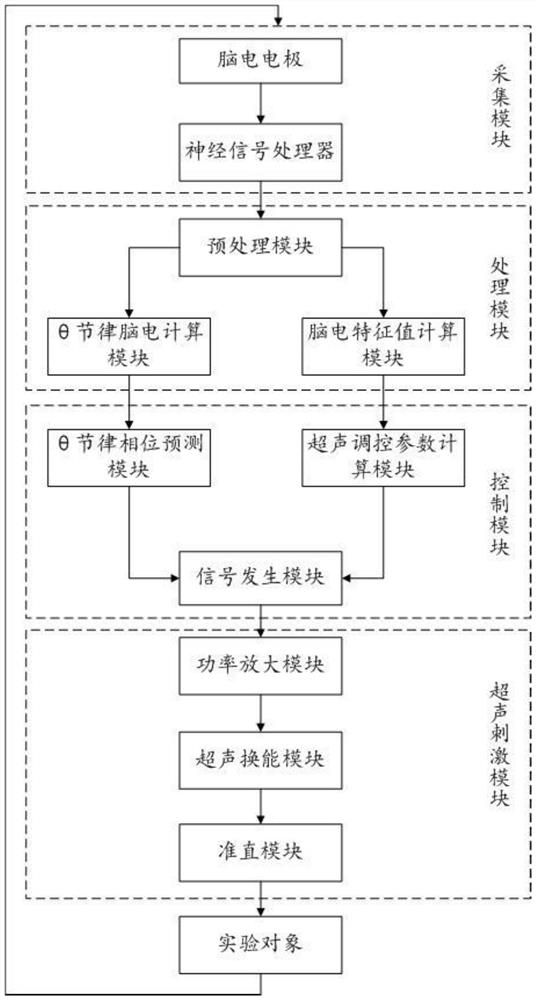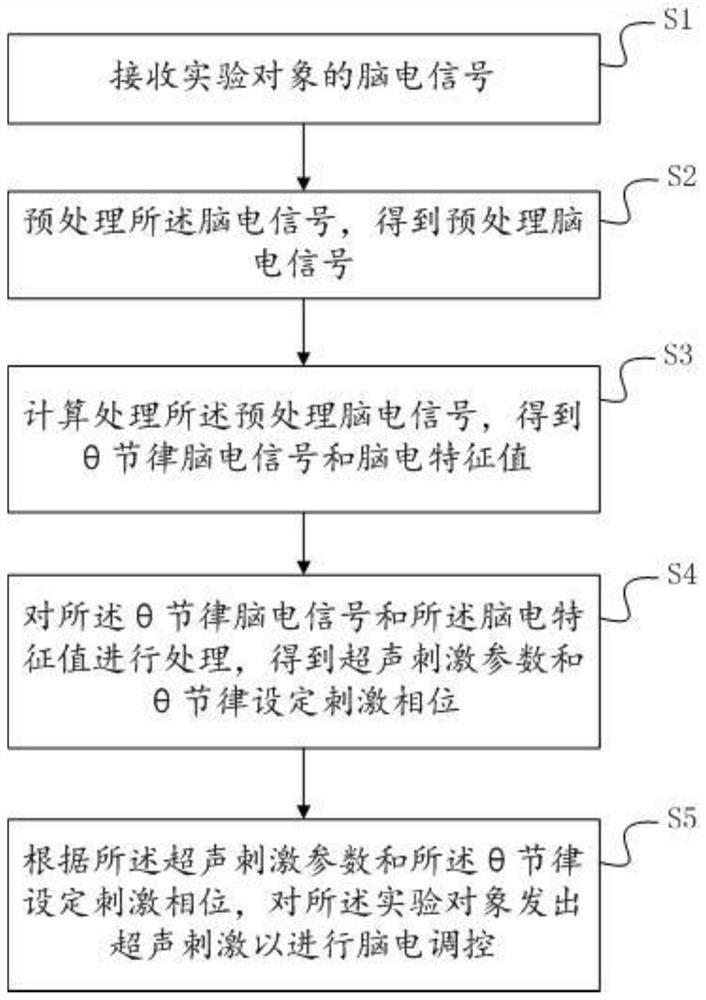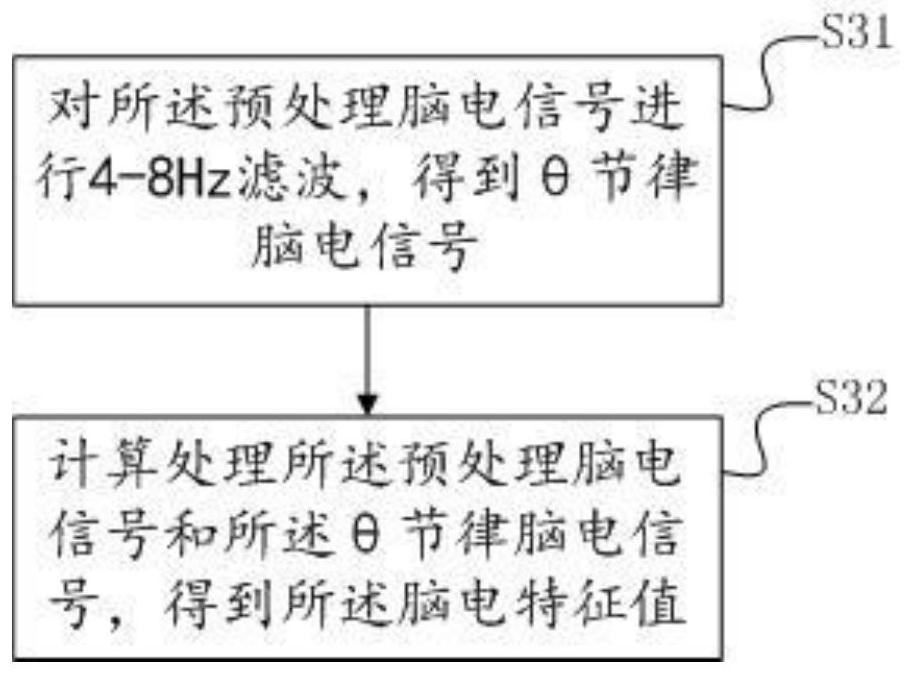Closed-loop electroencephalogram regulation and control method and system
A control system and EEG technology, applied in medical science, sensors, diagnostic recording/measurement, etc., can solve problems such as θ rhythm without consideration, achieve the effect of ensuring the accuracy of stimulation and improving learning and memory
- Summary
- Abstract
- Description
- Claims
- Application Information
AI Technical Summary
Problems solved by technology
Method used
Image
Examples
Embodiment 1
[0052] Please refer to figure 1 , the present embodiment provides a closed-loop EEG control system, the system includes an acquisition module, a processing module, a control module and an ultrasonic stimulation module.
[0053] The collection module is connected to the experiment object and is used to collect the EEG signal of the experiment object in real time; wherein, the experiment object is set to a small black mouse commonly used when carrying out experiments in the laboratory; the collection module includes EEG electrodes and nerve signals Processor; the EEG electrodes include three circuits, wherein one tungsten microelectrode is inserted into the CA1 region of the hippocampus under the skull of the subject to record the EEG of this brain region, and the other two electrodes are inserted on the nasal bone of the subject as reference electrodes and a ground electrode; the neural signal processor is connected with the EEG electrode, configured to convert the EEG signal i...
Embodiment 2
[0076] This embodiment provides a closed-loop EEG regulation method using the closed-loop EEG regulation system described in Embodiment 1, figure 2 It is a flowchart of the method, and the method includes the steps of:
[0077] S1. Receive the EEG signal of the subject.
[0078] In this embodiment, the experimental subjects are small black mice commonly used in laboratory experiments.
[0079] S2. Preprocessing the EEG signal to obtain a preprocessed EEG signal.
[0080] This step specifically includes: performing down-sampling, 50 Hz notch wave denoising and 4-200 Hz filter processing on the EEG signal to obtain a preprocessed EEG signal.
[0081] S3. Calculate and process the preprocessed EEG signal to obtain the θ rhythm EEG signal and EEG feature value.
[0082] Such as image 3 As shown, this step specifically includes:
[0083] S31. Perform 4-8 Hz filtering on the preprocessed EEG signal to obtain theta rhythm EEG signal;
[0084] S32. Calculate and process the pr...
PUM
 Login to View More
Login to View More Abstract
Description
Claims
Application Information
 Login to View More
Login to View More - R&D
- Intellectual Property
- Life Sciences
- Materials
- Tech Scout
- Unparalleled Data Quality
- Higher Quality Content
- 60% Fewer Hallucinations
Browse by: Latest US Patents, China's latest patents, Technical Efficacy Thesaurus, Application Domain, Technology Topic, Popular Technical Reports.
© 2025 PatSnap. All rights reserved.Legal|Privacy policy|Modern Slavery Act Transparency Statement|Sitemap|About US| Contact US: help@patsnap.com



